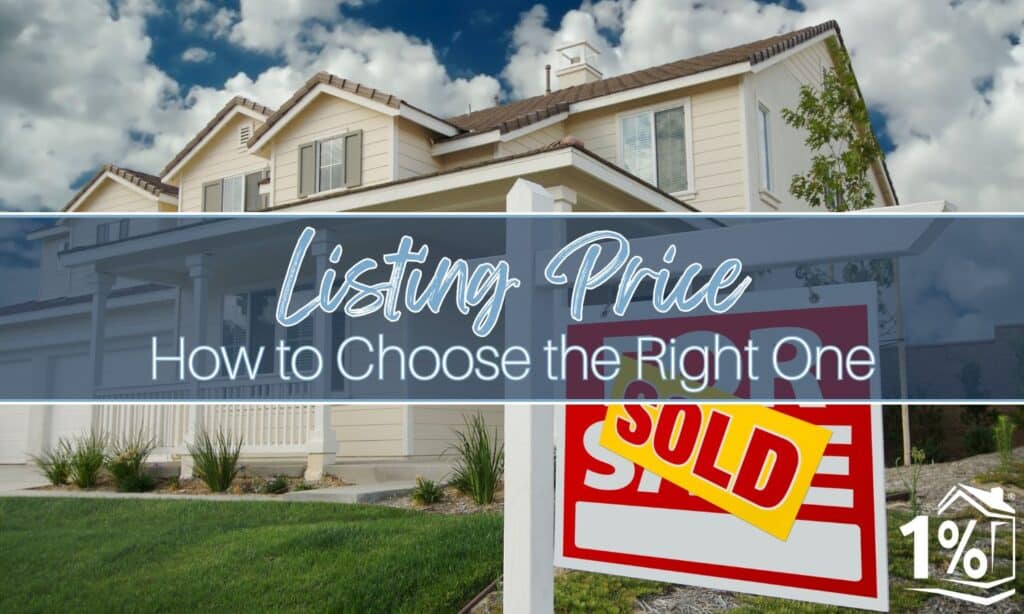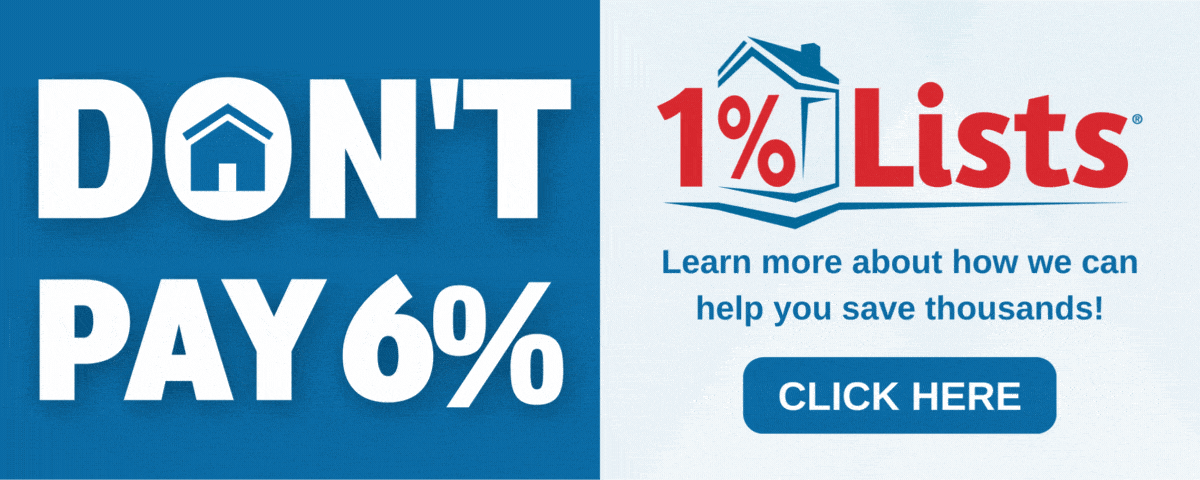One of the first things you need to consider when selling your home is how much you should list it for. You may be thinking about buying a new home and need the proceeds for your next purchase. Or perhaps you want to downsize and use the left over cash for retirement.
Your list price will largely be determined by the current local real estate market. That market is based on what people are willing to pay for your home. You should choose the right listing price of your home before its first day on the market. This will ultimately determine how fast your home sells and for how much.
Price your home correctly to avoid a home sitting on the market. Listings that stay on the market can cause buyers to worry about the home. They may think there is a problem with the property and avoid it altogether.
Buyers often narrow their search by price parameters. If you price your home outside of their budget, they won’t see it until you have reduced the price and fit into their price range. Of course, you don’t want to list the home too low either, so research is key.
There are several online tools that gather information from several sources to produce a real-time estimate of home value based on market trends. It can give you a rough idea of the value of your home and how it has fluctuated since you bought it.
The best way to figure out a good listing price for your home is to talk to your real estate agent to get a fuller picture. Working with your agent can be tremendously helpful. They will use their knowledge of the current market and their experience to help you.
5 factors to consider when pricing your home
The list price is the amount you put on your home’s listing when it first hits the Multiple Listing Service (MLS) of the real estate industry.
This is usually not the value you will eventually sell your home for nor the assessed tax value. You and your agent will decide on the final list price after taking into consideration the following factors: location and comparable sales, condition and improvements, local market conditions, and the like.
1. The location of your home
Can you walk from your home to an elementary school with a high rating? Do you have good public transportation and is crime low in your neighborhood? These factors can make a huge difference in the value of your home.
It’s not just about your neighborhood. Where you live within that neighborhood is important. Are you at a busy intersection? Is the home on a road with a double yellow-line? Do you live in a neighborhood that has the best plot?
Your location will also influence the comparable sales, also known as comps, that your agent pulls. When evaluating a listing price, real estate agents will consider properties in a similar location within a half-mile to a mile radius.
2. Recent home sales prices
Your agent will likely bring you a Comparative Market Analysis (CMA) when you meet them for the first time. This document compares your home with recently closed sales to help establish a listing value. This data is important even if you believe your home to be worth more.
These comparable sales are also used by the mortgage lender when they appraise your home.
Your home may not be appraised correctly if you accept an offer much higher than comparable sales. The buyer could pull out of the deal if they can’t obtain a mortgage.
3. The condition of your home
Does your house need some work or is it well-maintained? Has the house been renovated completely from top to bottom or is it still in the same condition as when you bought it 20 years ago?
A home that is in excellent condition and has been updated will sell for more than one with a bathroom dating back to the 1970s. This is because buyers don’t need to consider remodeling costs. The home will also “show” better, especially if you stage the home properly.
These days, buyers are well-informed when they look at a home. They know, when they walk in, that updating a kitchen will cost anywhere between $40,000 and $60,000.
The condition of your home has a significant impact on its price. You can still sell a house that needs work. However, you must factor this in when deciding the price to list it for.
Consider listing your house as-is if you don’t want to fix or update it. Your agent will be able to explain the pros and cons of selling a house as-is.
When determining the value of your home, appraisers also consider its condition, age and any repairs that are needed. When adding a renovated kitchen to the value of a home or subtracting a bathroom that is outdated, they will do the same calculations a buyer would. Getting a pre-listing home inspection can also give you valuable information as to what a buyer will find when they do theirs.

4. Renovations and improvements to your home
You can increase the value of your home if you have added square footage or remodeled and updated the bathroom. Don’t assume that just because you spent $45,000 on a new kitchen that you can add that to the price of your home. Some remodeling and renovation projects have a better return on investment than others.
The National Association of Realtors (NAR), in its 2022 Remodeling Report, found that most interior remodeling projects that interest buyers only return between 56-147% of the cost. And most of them return less than 100%. It’s not always what you think. For example, adding new hardwood flooring will return 118% more compared to upgrading your kitchen, which returns roughly 67%. Your agent knows what buyers are currently looking for in your area and which updates will increase your list price. It is super important to think about these upgrades carefully as to not just add to the cost of selling your home.
5. Market conditions in your area
Your agent will advise you on a listing strategy that is appropriate for the market in which you are selling. Three types of real estate markets exist: a buyer’s market, a seller’s market, and a neutral market.
In a buyers’ market, there are fewer homes for sale compared to the number of buyers. The seller may have to lower their price in order to get more interest. Most often, sellers will have to make some concessions to close the deal, like paying a portion of closing costs.
In a market where there are more homes than buyers, the situation is reversed. It’s not uncommon to see bidding wars, buyers waiving contingencies and homes selling quickly for more than the list price.
In a neutral housing market, supply and demand are balanced. In this scenario, homes tend to be sold within a few weeks and at close to list price.
In conclusion
Determining the right listing price for your home is a multifaceted process influenced by numerous factors, including market trends, the condition of your property, and local real estate dynamics. Careful consideration of location, recent sales, property condition, renovations, and broader market conditions is essential.
Leveraging the expertise of a real estate agent can significantly aid in navigating these complexities, ensuring your home is priced strategically to attract potential buyers and achieve a satisfactory sale. By integrating market analysis with personal insight, sellers can set a price that reflects the true value of their home, balancing optimism with realistic expectations for a successful transaction.


